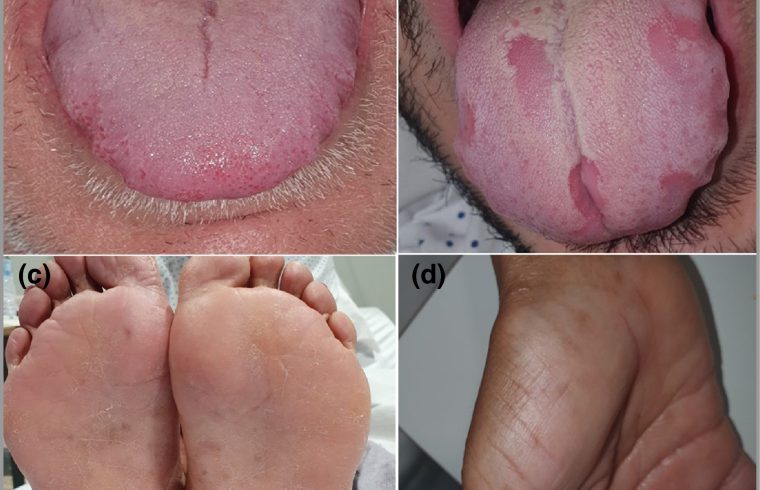We’re more than a year into the pandemic, and doctors are still identifying strange new symptoms of COVID-19 — such as what’s being called “COVID tongue,†as well as burning sensations in the palms of hands and on the bottoms of feet.
The Centers for Disease Control and Prevention (CDC) lists 11 possible signs that someone is infected with SARS-CoV-2, aka the novel coronavirus that causes COVID-19. These include:
- Fever or chills
- Cough
- Shortness of breath or difficulty breathing
- Fatigue
- Muscle or body aches
- Headache
- New loss of taste or smell
- Sore throat
- Congestion or runny nose
- Nausea or vomiting
- Diarrhea
But the CDC notes that this does not cover all possible symptoms. Keep in mind that this is still a relatively new virus that researchers are continuing to investigate, in order to understand exactly how it spreads, and why some people get very sick and die from it, while others show few or no signs of being infected at all.
And some of the other symptoms that COVID-19 patients have reported are pretty unusual, such as swollen or discolored “COVID toes†(pseudo-frostbite lesions called pernio or chilblains) or skin rashes that can range from being patchy to presenting with blisters that look like chickenpox.
Coronavirus update:Vaccine hopes boosted by data from Novavax and J&J, but fears over new variants remain
Now Madrid researchers are adding some more strange symptoms to that list after examining 666 infected adult patients at a Spanish field hospital last April. One in four of these patients reportedly noticed what is being called “COVID tongue,†which included uncomfortable oral issues such as: swollen and inflamed tongues with indentations on the side; small bumps or patchy areas on the tongue; and swelling of the mouth or sores.

What’s more, one in 10 of these patients reported suffering burning sensations in their hands and feet, hives, or other painful swelling in those extremities.
The research team presented its findings earlier this week, although they were also published as a research letter in the British Journal of Dermatology last September. They cautioned that the patients analyzed in this study were all adults with COVID-19 pneumonia, so these findings should not be applied to children or asymptomatic individuals. These symptoms should also not be considered a diagnostic tool for the coronavirus. Here’s what you should know about coronavirus testing.
British researcher Tim Spector, a professor of genetic epidemiology at King’s College London, also tweeted about COVID tongue earlier this month. “Seeing increasing numbers of Covid tongues and strange mouth ulcers,†he wrote. “If you have a strange symptom or even just headache and fatigue stay at home!â€
He also said that one in five COVID-19 patients show “less common symptoms†like skin rashes. “Fizzing†has been another one, which describes “electric,†“tingling†or “burning†sensations that some coronavirus patients have complained about on Twitter.
While researchers haven’t determined the cause of such strange symptoms just yet, one theory is that “the immune system is just having a very hyperactive response to this coronavirus,†as Dr. Purvi Parikh, a pediatric allergist and immunologist at NYU Langone Health, previously told MarketWatch. “A lot of the damage the virus causes is not really the infection itself; it’s how your immune system reacts to it.â€
Call your doctor or local health department if the above COVID-19 signs emerge, or if you’re seeing any symptoms that are severe or causing concern. Such “emergency warning signs†for COVID-19 that you should report ASAP include:
- Trouble breathing
- Persistent chest pain or pressure in the chest
- New confusion
- Inability to wake after sleeping, or to stay awake
- Bluish lips or face
And you should always call 911 for any medical emergency.
Stay up-to-date with MarketWatch’s coronavirus coverage here, including the latest on vaccine development and distribution, the status of stimulus packages, and news about the new strains.






